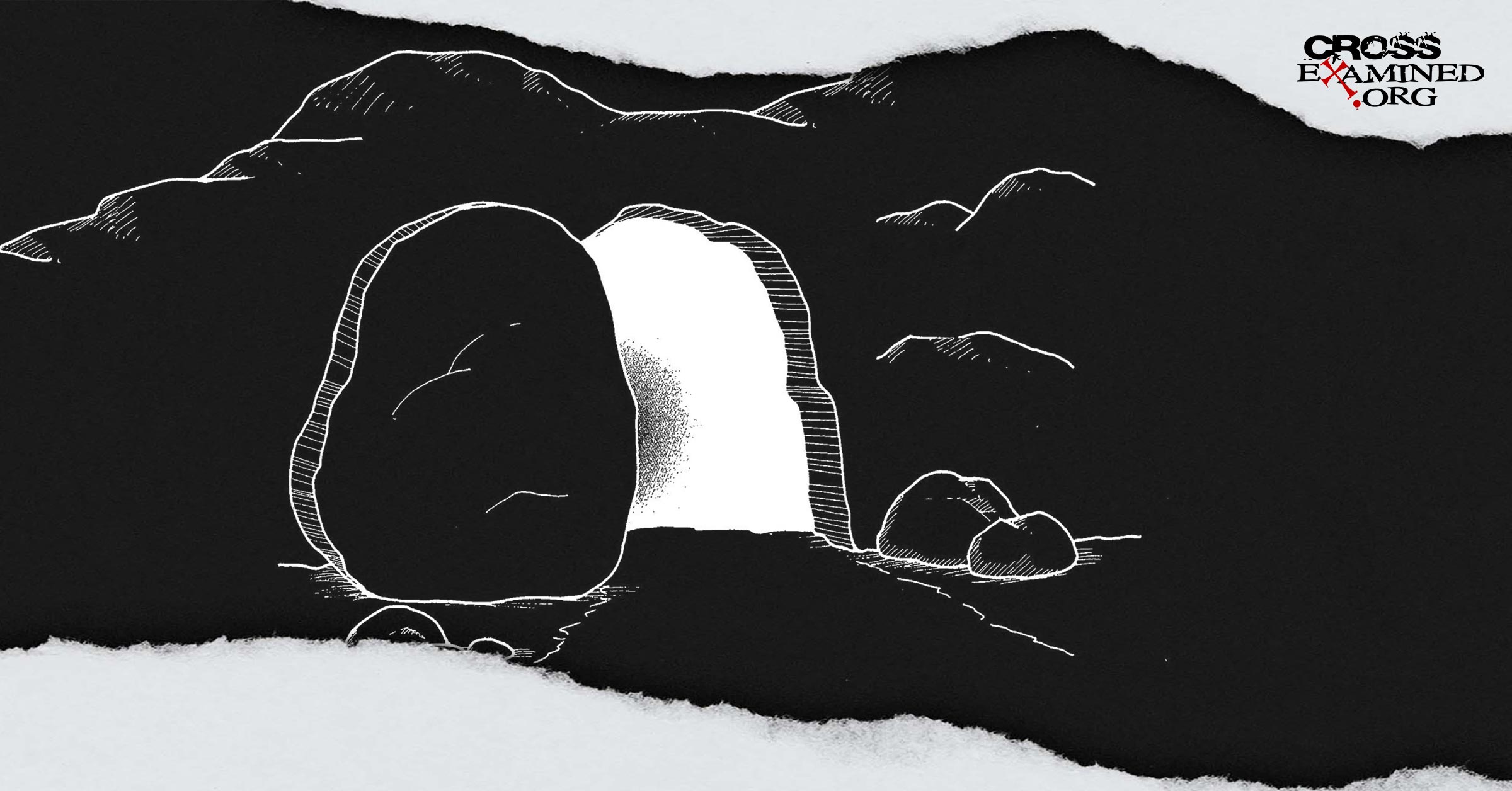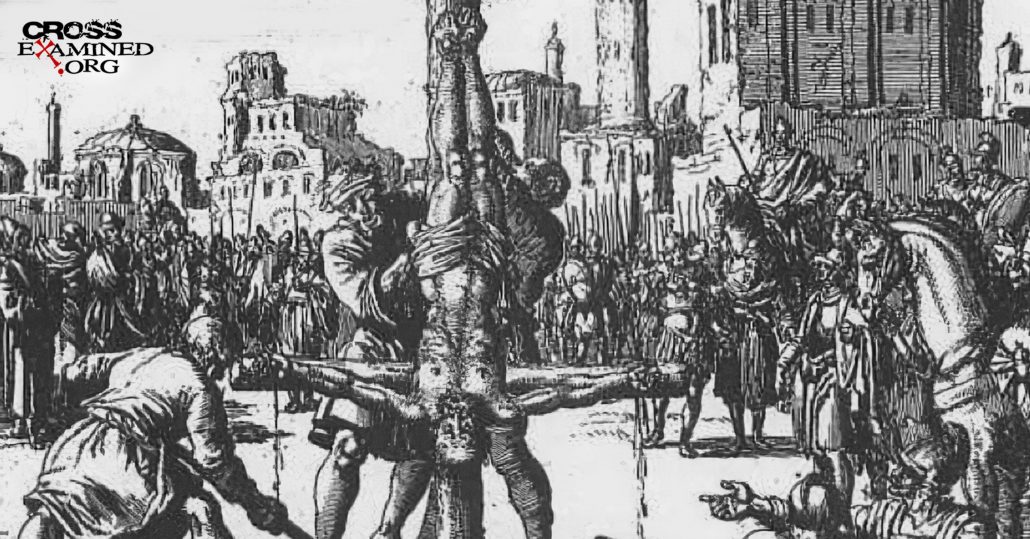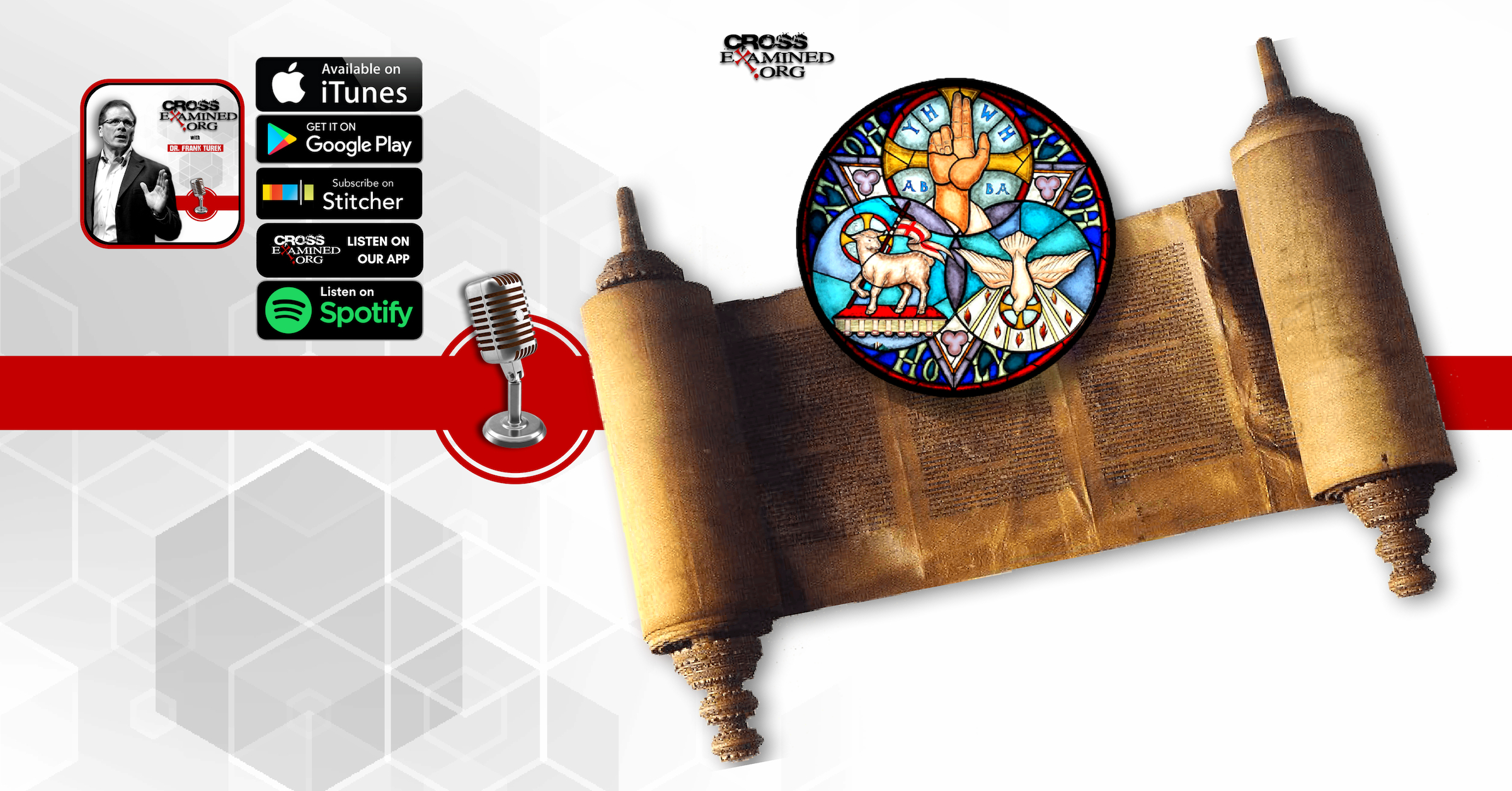A popular argument that is wielded by Christian apologists, at both the scholarly and popular level, is based on 1 Corinthians 15:3-8, taken by many contemporary scholars to represent an ancient creedal tradition that goes back to within only a couple of years of Jesus’ death. Indeed, Michael Licona states that “In nearly every historical investigation of the resurrection of Jesus, 1 Corinthians 15:3-8 weighs heavily and is perhaps the most important and valuable passage for use by historians when discussing the historicity of the resurrection of Jesus.”[1] The text reads as follows:
3 For I delivered to you as of first importance what I also received: that Christ died for our sins in accordance with the Scriptures, 4 that he was buried, that he was raised on the third day in accordance with the Scriptures, 5 and that he appeared to Cephas, then to the twelve. 6 Then he appeared to more than five hundred brothers at one time, most of whom are still alive, though some have fallen asleep. 7 Then he appeared to James, then to all the apostles. 8 Last of all, as to one untimely born, he appeared also to me.
In this article, I want to offer a critical appraisal of this argument, with a view towards evaluating the evidence for this text being a creed as well as the data that bears on its dating. I will conclude by offering an appraisal of the evidential value of this text in relation to the historicity of the resurrection of Jesus.
Is 1 Corinthians 15:3-7 a creed?
Several lines of evidence are commonly adduced in support of this text being derived from an oral creedal tradition. The first of those is the use of the words “delivered” (Παρέδωκα) and “received” (παρέλαβον). Craig Keener notes that this “is the language of what scholars call ‘traditioning’: Jewish teachers would pass on their teachings to their students, who would in turn pass them on to their own students. The students could take notes, but they delighted especially in oral memorization and became quite skilled at it; memorization was a central feature of ancient education.”[2] Richard Bauckham notes that “these Greek words were used for formal transmission of tradition in the Hellenistic schools and so would have been familiar in this sense to Paul’s Gentile readers. They also appeared in Jewish Greek usage (Josephus, Ant. 13.297; C. Αρ. 1.60; Mark 7:4, 13; Acts 6:14), corresponding to what we find in Hebrew in later rabbinic literature (e.g., m. ‘Avot 1.1).”[3] Indeed, the Mishnaic tractate of Avot says “Moses received the Torah at Sinai and delivered it to Joshua,” (m. ‘Avot 1.1).
This view of 1 Corinthians 15:3-7 as being derivative of pre-Pauline tradition seems to command the consensus opinion of the scholarly guild, and is accepted even by skeptics including German New Testament scholar Gerd Lüdemann[4] and UNC Chapel Hill New Testament scholar Bart Ehrman[5]. In agreement with the scholars cited above, Ehrman notes that “the terms [Paul] uses here of ‘delivering to you’ and ‘having received’ are code language in ancient Jewish circles for traditions that are passed down from a teacher to his students: during his studies the teacher ‘receives’ a tradition and then in his teaching he ‘delivers’ it to his own followers. That’s how traditions get circulated among teachers and students. Paul, good Jew that he is, is simply referring to information that has been given to him by others before he passes it along himself.”[6]
I think this view of the text is most likely the best interpretation of Paul’s introductory formula, Παρέδωκα γὰρ ὑμῖν ἐν πρώτοις, ὃ καὶ παρέλαβον. This is all the more plausible given that Paul belonged to the Pharisaical sect of Judaism, which Mark and Josephus both inform us were zealous for tradition (Mk 7:3,5; Jos. Ant 13.10.6; 13.16.2). There are also various Pauline texts that indicate the importance of tradition to Paul (1 Cor 11:2, 23; 15:1, 2, 3; Gal 1:14; Phil 4:9; Col 2:6; 1 Thes 2:13; 4:1; 2 Thes 2:15; 3:6).
The question remains, however, whether the expression should be taken to simply indicate that the information Paul is passing on is derivative from pre-Pauline tradition, or whether the text of 1 Corinthians 15:3-8 itself represents a verbatim transcript of an earlier oral creedal tradition. Advocates of the latter view have tended to emphasize aspects of 1 Corinthians 15:3-7 that appear to be non-Pauline. Michael Licona observes that “with a lone exception in Galatians 1:4, ὑπὲρ τῶν ἁμαρτιῶν ἡμῶν (‘for our sins’) is absent elsewhere in Paul (and the rest of the New Testament), who prefers the singular: ‘sin.’ The phrase ‘according to the Scriptures’ is absent elsewhere in the Pauline corpus and the New Testament, where we read γέγραπται (‘it is written’). Instead of the typical aorist, the perfect passive ‘he has been raised’ is found only in 1 Corinthians 15:12–14, 16, 20 and in 2 Timothy 2:8, which is also a confessional formula believed to be pre-Pauline. ‘On the third day’ is only here in Paul. In Paul, the term ὤφθη (‘appeared to’ or ‘was seen’) is found only in 1 Corinthians 15:5–8 and 1 Timothy 3:16. ‘The Twelve’ is only here in Paul. Elsewhere he uses ‘the apostles.’”[7] This observation, in my opinion, contributes only weak evidence to the case for the pre-Pauline origins of the text itself (as opposed to the facts that the text expresses). Every New Testament author utilizes expressions that he does not customarily use, so caution is warranted before drawing firm conclusions about authorship from word choice, especially when the relevant text is as short as this.
A second argument that this text is of pre-Pauline origin is that “we can see parallelism in the text: the first and third lines are longer, have the same construction (verb, closer modification, proved by the Scriptures) and are followed by a short sentence introduced by ὅτι.”[8] It is possible that Paul constructed the parallelism of this text himself, since it is only here, out of all of Paul’s epistles, that he offers a summary of the key elements of the gospel, presumably with the intent that his readers commit them to memory. Indeed, Paul himself at times constructs his own parallelisms (e.g. Rom 1:26-27; 1 Thes 2:3,5,10). Thus, it is not entirely implausible that he would create this parallelism for ease of memorization, though one may say in response that the parallelism is somewhat less predicted on the hypothesis of Pauline origin than on the hypothesis that this text represents a pre-Pauline creed. The text, with its parallelisms and rhythmic style, does indeed sound like a creed up until verse 8, wherein we read, “Last of all, as to one untimely born, he appeared also to me.” This verse, I would argue constitute some evidence against the text being of creedal origin, though this is not by any means decisive since Paul could plausibly have transitioned from something more formal into the informal addition of himself to the end of the list. Paul also adds in verse 6 concerning the five hundred, “most of whom are still alive, though some have fallen asleep.” This too does not comport well with the claimed creed-like structure of these verses, though it may be Paul’s own editorial insertion into the text of the creed. Thus, the parallelist structure of 1 Corinthians 15:3-7 may, again, be taken only as weak evidence in favour of the text being of pre-Pauline origin.
The German New Testament scholar Gerd Lüdemann has argued that “within the report of the first appearance of Christ to Cephas in verse 5, the clause ‘he appeared to Cephas, then to the Twelve’ can be detached as an independent unit from the tradition handed down by Paul during his founding visit. This is suggested not only by the parallel to Luke 24:34 (‘the Lord was really raised and appeared to Simon’), but by Mark 16:7 (‘tell his disciples and Peter’).”[9] Concerning the parallelism of “he appeared” in 1 Corinthians 15:5-7, Lüdemann suggests that this “could be explained in two ways: either Paul was modeling his language in verse 7 on verse 5, which employed a tradition about an appearance to James and to al the apostles, or Paul was reproducing two independent traditions. In the latter case either the one formula had already been modeled earlier on the basis of the other or the two formulae have a common origin. In either case, it is clear that verses 5 and 7 both derive from earlier tradition.”[10] Thus, establishing the actual historical origins of this text is more complex than often made out, and more than one plausible scenario exists.
Some scholars have observed a correspondence between 1 Corinthians 15:3-5 and Paul’s words in Acts 13-28-31 that may support the text of 1 Corinthians 15:3-5 being derivative of an earlier creedal tradition.[11] Acts 13:28-31 indicates that,
28 And though they found in him no guilt worthy of death, they asked Pilate to have him executed. 29 And when they had carried out all that was written of him, they took him down from the tree and laid him in a tomb. 30 But God raised him from the dead, 31 and for many days he appeared to those who had come up with him from Galilee to Jerusalem, who are now his witnesses to the people.
Bart Ehrman even notes that “Possibly this is the tradition that lies behind 1 Corinthian 15:4 as well: ‘and he was buried.’”[12] If this is so, then 1 Corinthians 15:4 may indeed indicate that Jesus buried in a tomb (as opposed to a common grave), a point that is often contested.[13]
Another line of evidence is Paul’s use of κήρυγμᾶκηρύσσω to describe the tradition.[14] Paul writes that he is going to remind them of τὸ εὐαγγέλιον ὃ εὐηγγελισάμην, ὃ καὶ παρελάβετε (“the gospel I preached to you, which you received”). He also uses, when describing this gospel, the phrase τίνι λόγῳ εὐηγγελισάμην ὑμῖν (“the word I preached to you”). When referring back to the content of 1 Corinthians 15:3-7, Paul uses οὕτως κηρύσσομεν (“we preach in this way”) (1 Cor 15:11; c.f. 1 Cor 15:12, 14). Licona states that “Κήρυγμα/κηρύσσω is a more formal term than εὐαγγέλιον͂εὐαγγελίζω and can refer to an ‘official or public announcement,’ though this need not be the case. It is interesting, therefore, to see that after citing the tradition, Paul changes his description of his message and the activity of imparting it from εὐαγγέλιον͂εὐαγγελίζω το κήρυγμᾶκηρύσσω.”[15] Licona is correct that the noun Κήρυγμα and its related verb κηρύσσω can refer to an official or public announcement (e.g. LXX 2 Ch 30:5; EsdA 9:3; Pr 9:3; Jon 3:2), though it need not necessarily. However, even if this is the intended meaning in the context of 1 Corinthians 15, I do not think this at all implies the verbatim proclamation of a prescribed text, such as a creedal statement. It could simply be that the content of the gospel message (which is summarized by 1 Cor 15:3-7) was publicly proclaimed. In fact, Paul uses both of those words frequently in his letters to refer to the preaching of the gospel (Rom 16:25; 1 Cor 1:21, 23, 2:4, 9:27; 2 Co 1:19, 4:5, 11:4; Gal 2:2, 5:11; Phil 1:15; Col 1:23; 1 Thes 2:9, 3:16, 4:2; 1 Tim 3:16, 4:2; 2 Tim 4:17; Tit 2:3; 1 Pet 3:19; Rev 5:2). Thus, his use the term in 1 Corinthians 15 is not at all surprising, and I do not judge that I can even call this weak evidence supporting 1 Corinthians 15:3-7 being a pre-Pauline creedal tradition.
Probably the weakest argument I have encountered for the pre-Pauline origins of 1 Corinthians 15:3-7 is the use of the Aramaic name Κηφᾶς (transliterated into Greek) for Peter.[16] Since Κηφᾶς is the transliteration of an Aramaic name into Greek, so the argument goes, this is suggestive of an early origin. However, of the ten times in his letters that Paul mentions Peter, five of those he uses the name Κηφᾶς (1 Cor 1:12, 3:22, 9:5, 15:5, Gal 2:9). In fact, the Nestle-Aland text also uses Κηφᾶς in an additional two of those texts (Gal 1:18, 2:11). Of the four times Peter is mentioned in 1 Corinthians, every single one of them uses the name Κηφᾶς. Thus, this argument too I can not even consider to contribute weak evidence to the case for 1 Corinthians 15:3-7 being a pre-Pauline creedal tradition.
Of the arguments summarized above, the strongest in my opinion are the use of “delivered” and “received” (1 Cor 15:3) combined with the rhythmic structure and parallelisms of 1 Corinthians 15:3-7. Given that these features seem at least somewhat more probable on the hypothesis that this text represents a creedal tradition than on its falsehood (and the absence of stronger disconfirming evidence), these data are, in my opinion sufficient to make the pre-Pauline origins of this text somewhat more probable than not, though this conclusion is by no means as certain as it is often implied. What does seem to be secure, however, is that Paul received information from the Jerusalem apostles, which is summarized in 1 Corinthians 15:3-7. The only question that is still uncertain is whether Paul is summarizing that information in his own words or whether he is quoting from an earlier formalized creedal tradition that preceded his own writing.
One objection that is sometimes raised is that Paul indicates elsewhere that “I did not receive [the gospel] from any man, nor was I taught it, but I received it through a revelation of Jesus Christ,” (Gal 1:12).[17] If Paul received the gospel through a revelation of Jesus Christ, so the argument goes, then how can Paul be passing on tradition in 1 Corinthians 15:3-7 which he had previously received from the other apostles? However, even though Paul received the gospel by the revelation of Christ Jesus, it does not follow that he did not receive a creed tradition containing that gospel from the Jerusalem apostles. Moreover, if Paul had not known from other people that Jesus had been raised from the dead, then he would not have known who spoke to him on the road to Damascus, or for that matter what was meant by “I am Jesus, whom you are persecuting” (Acts 9:5). The appearances that Paul lists in 1 Cor 15:3-7 (to Peter, the Twelve, the five hundred, James, and all the apostles) were almost certainly learned about from his conversations with other people.
The Date of the Creed
Having given my assessment of the evidence for 1 Corinthians 15:3-7 representing a pre-Pauline credal tradition, let us inquire as to when this tradition may have been received by Paul. I would agree with Michael Licona and others that “There are good reasons for concluding that this tradition probably came from Jerusalem”[18] since that is where the original church leaders were headquartered. As for when exactly Paul received this tradition, a few possibilities have been proposed. One option is that Paul received this tradition while in Damascus, perhaps from Ananias or other Christians who were present there, which would likely place it within one to three years of Jesus’ death.[19]
Another option is that Paul received the tradition in Jerusalem upon his visit three years following his conversion, where he stayed with Peter for fifteen days (Gal 1:18). During this visit, Paul also saw James (Gal 1:19).[20] Licona notes that “Of interest is the term Paul uses to describe what he did while with Peter: ἱστορῆσαι (‘visit’), from which derives our English term history. The term may mean ‘to get information from,’ ‘to inquire into a thing, to learn by inquiry.’ What was it to which Paul inquired? He could have been attempting to get to know Peter, the leading Jerusalem apostle at the time. But from his letters Paul does not appear to be the type of person who would want to take just over two weeks simply to develop a friendship with a colleague for the sake of having another friend.”[21] Licona is correct that this word can mean “to inquire into” or “to visit and get information.” That Paul received this tradition on this visit to Jerusalem is plausible, though not certain. There are also two other journeys that Paul made to Jerusalem (Acts 11:27-30; 15:1-9; Gal 2:1-10).
These are also both possibilities for when he received this tradition. There are still other possibilities. For example, Paul may have received some or all of the tradition from Barnabas or from James during his first visit to Jerusalem following his conversion (Acts 9:26-29; Gal 1:19). Paul also tells us of a visit by Peter to Antioch (Gal 2:11). He may even have received the tradition from Barnabas during the considerable time they spent together (Acts 11:25-30; 12:25-15:40). Silas also accompanied Paul during his next missionary journey (Acts 15:40-17:14; 18:5-11). This would put Paul and Silas together between 49 and 51 A.D., shortly before he wrote 1 Corinthians. Paul thus may have received it from him during that time as well. The reality is that any attempt to specify precisely when Paul received the oral tradition from the Jerusalem apostles is intelligent guesswork and conjecture. The bottom line is that we just cannot say with confidence when precisely Paul received the tradition.
The Evidential Value of 1 Corinthians 15:3-8
With so much lack of certainty about whether 1 Corinthians 15:3-7 represents a pre-Pauline creedal tradition and the precise dating of such a tradition, is this text of any evidential value to the case for the resurrection? I would argue that the answer is ‘yes’. Regardless of whether this text is pre-Pauline or Paul’s own literary construction, what is well supported is that those verses summarize information that Paul had received from the Jerusalem church leaders. The text thus gives one a window of insight into what was being proclaimed by the Jerusalem apostles, in particular Peter and James, whom we know Paul was personally acquainted with. This is further supported by Paul’s words in verses 8-11:
8 Last of all, as to one untimely born, he appeared also to me. 9 For I am the least of the apostles, unworthy to be called an apostle, because I persecuted the church of God. 10 But by the grace of God I am what I am, and his grace toward me was not in vain. On the contrary, I worked harder than any of them, though it was not I, but the grace of God that is with me. 11 Whether then it was I or they, so we preach and so you believed.
Note what Paul says in verse 11: “Whether then it was I or they [i.e. the Jerusalem apostles], so we preach and so you believed.” Paul thus seems to assume that the Corinthian Christians, to whom he was writing, understand his summary of the gospel to be consistent with what had already been preached by the Jerusalem apostles. We also know independently that the Corinthian church were acquainted with Peter’s preaching (1 Cor 1:12). Thus, it is probable that the message Paul communicates in 1 Corinthians 15:3-8 is consistent with what was being preached by Peter, James and the Twelve. Michael Licona agrees. He notes, “even if Paul received the tradition embedded in 1 Corinthians 15:3–7 from someone outside of the Jerusalem leadership, his constant interaction with these leaders in and outside of Jerusalem coupled with his high regard for tradition virtually guarantees that the details of the tradition in 1 Corinthians 15:3–7 are precisely in line with what the Jerusalem leadership was preaching (1 Cor 15:11). We have what amounts to a certifiably official teaching of the disciples on the resurrection of Jesus.”[22] Thus, irrespective of the question of whether Paul is passing on an oral creedal tradition, and when and from whom he may have received it, this text does provide sufficient reason to conclude that the apostles before Paul were claiming that Jesus had been raised from the dead and had appeared to them. The text is also of evidential value since Paul provides his own eyewitness testimony to have encountered the risen Lord (1 Cor 15:8).
One important caveat I wish to make here is that we ought not be overly-reliant on 1 Corinthians 15 to build our case for the resurrection, since it is difficult to make a robust case, as I have done elsewhere[23], for the rationality of the apostles’ belief to have witnessed the risen Christ unless we are able to determine what the resurrection appearances were like. The report in 1 Corinthians 15 is consistent with a floating, non-speaking Jesus, or with a Jesus who appears only once, briefly, and speaks only a few words. The case for the resurrection therefore cannot and should not be divorced from a robust case for the substantial trustworthiness of the gospels and Acts and their grounding in credible eyewitness testimony.
Furthermore, a popular criticism of using 1 Corinthians 15:3-8 in arguments for the resurrection is that Paul makes no qualitative distinction between his own experience of the risen Jesus and those of the other apostles, using the Greek word ὤφθη to describe both.[24] Acts 9:1-9 indicates that Paul’s encounter with the risen Jesus, which took place after the ascension, did not involve the sort of physical interactions we read of the apostles having with Jesus following His death in the gospel accounts. On what basis, then, can we be confident that Paul understands the apostles to have had the sort of experiences with Jesus following His resurrection that we read of in the gospels? Again, if we are not able to determine the nature of the claimed experiences of the risen Jesus, it is very difficult to evaluate the rationality of the disciples’ belief that Jesus had risen from the dead. I am not optimistic that this case can be robustly made from the Pauline corpus alone, though the Pauline evidence certainly inclines that way, in particular Paul’s statement, ἔσχατον δὲ πάντων ὡσπερεὶ τῷ ἐκτρώματι ὤφθη κἀμοί (“and last of all as to one untimely born he was seen also by me”). This, it may be argued, draws a separation between his experience from that of those who were apostles before him. Kirk MacGregor notes, “This observation rules out the possibility that Paul is here attempting to convey that he experienced Christ in a manner qualitatively identical to those listed in the creed. But Paul moves one step further. By placing ὤφθη κἀμοί (‘he was seen also by me’) after ὡσπερεὶ τῷ ἐκτρώματι, Paul explicitly shows ὡσπερεὶ τῷ ἐκτρώματι to be a qualifying phrase which modifies ὤφθη κἀμοί rather than a temporal indicator. Hence Paul uses ὡσπερεὶ τῷ ἐκτρώματι to explain how the character of his appearance was qualitatively distinct from those recounted in the primitive tradition. While the previous disciples ‘saw’ Jesus in the normal fashion, Paul admits to have ‘as to one untimely born seen’ Jesus—namely, to have seen him in an abnormal fashion.”[25] This evidence is surely suggestive but it does not seem to me to be conclusive. Paul may simply be indicating that he had an encounter with the risen Lord despite the fact that Paul had not known Jesus during his earthly ministry.
How, then, can this case be made robustly? It is undeniable that Luke represents the post-resurrection encounters as involving multiple sensory modes. Jesus appears to multiple individuals at once, and those encounters are not merely visual but are also auditory. Jesus engages the disciples in group conversation. The encounters are close-up and involve physical contact. Moreover, Acts indicates that the appearances were spread out over a forty-day time period – thus, the resurrection encounters were not one brief and confusing episode. If, then, it can be shown that Luke was indeed a travelling companion of Paul, it would be quite surprising if his understanding of the apostolic claim concerning the resurrection differed essentially from that of Paul. Thus, the case from 1 Corinthians 15:3-8 should be complemented with a robust case for the author of Luke-Acts being a travelling companion of Paul. I have articulated this argument in detail elsewhere.[26]
Conclusion
In conclusion, the balance of evidence is in favor of the text in 1 Corinthians 15:3-8 being derivative from a pre-Pauline credal tradition, though it is not nearly as conclusive as it is often portrayed as being. While it is plausible that Paul received this tradition upon his visit to Jerusalem three years after his conversion, this is by no means certain, and any attempt to pin down the precise date is traipsing into highly speculative territory. Nonetheless, the text is of evidential value given that it allows us to establish, in harmony with other independent lines of evidence, that the resurrection claim goes back to the apostolic eyewitnesses themselves. Having thus eliminated the scenario that the claim of encounters with the risen Jesus arose much later and did not originate with the original apostolic eyewitnesses, we can move towards examining whether the claim originated as a result of deliberate deception on the part of the apostles, their being honestly mistaken, or because Jesus really was raised bodily from the dead, a topic that I have discussed in detail elsewhere.[27]
Footnotes
[1] Michael R. Licona, The Resurrection of Jesus: A New Historiographical Approach (Ilinois; Notingham, England: IVP Academic; Apollos, 2010), 223.
[2] Craig Keener, The IVP Bible Background Commentary: New Testament (Ilinois: InterVarsity Press, 1993).
[3] Richard Bauckham, Jesus and the Eyewitnesses: The Gospels as Eyewitness Testimony, 2nd edition (Michigan: Wiliam B. Eerdmans Publishing Company, 2017), 264-265.
[4] Gerd Lüdemann, The Resurrection of Christ: A Historical Inquiry (New York: Prometheus, 2004), Kindle.
[5] Bart Ehrman, How Jesus Became God: The Exaltation of a Jewish Preacher from Galilee (San Francisco: HarperOne, 2014), Kindle. Also see Bart Ehrman, “The Core of Paul’s Gospel,” The Bart Ehrman Blog, June 2, 2016 https://ehrmanblog.org/the-core-of-pauls-gospel/
[6] Bart Ehrman, How Jesus Became God: The Exaltation of a Jewish Preacher from Galilee (San Francisco: HarperOne, 2014), Kindle. Also see Bart Ehrman, “The Core of Paul’s Gospel,” The Bart Ehrman Blog, June 2, 2016 https://ehrmanblog.org/the-core-of-pauls-gospel/
[7] Michael R. Licona, The Resurrection of Jesus: A New Historiographical Approach (Ilinois; Notingham, England: IVP Academic; Apollos, 2010), 224-225.
[8] Ibid., 226.
[9] Gerd Lüdemann, The Resurrection of Christ: A Historical Inquiry (New York: Prometheus, 2004), Kindle.
[10] Ibid.
[11] William Lane Craig, On Guard: Defending Your Faith with Reason and Precision (Colorado: David C. Cook, 2010).
[12] Bart Ehrman, How Jesus Became God: The Exaltation of a Jewish Preacher from Galilee (San Francisco: HarperOne, 2014), Kindle.
[13] John W. Loftus, “The Resurrection of Jesus Never Took Place,” in The Case Against Miracles, ed. John Loftus (Hypatia Press, 2019), 336.
[14] Michael R. Licona, The Resurrection of Jesus: A New Historiographical Approach (Ilinois; Notingham, England: IVP Academic; Apollos, 2010), 226.
[15] Ibid.
[16] Gary Habermas and Michael L. Licona, The Case for the Resurrection of Jesus (Michigan: Kregel Publications, 2004), 221.
[17] John W. Loftus, “The Resurrection of Jesus Never Took Place,” in The Case Against Miracles, ed. John Loftus (Hypatia Press, 2019), 335.
[18] Michael R. Licona, The Resurrection of Jesus: A New Historiographical Approach (Ilinois; Notingham, England: IVP Academic; Apollos, 2010), 226.
[19] Ibid., 229.
[20] Ibid., 230.
[21] Ibid.
[22] Michael R. Licona, The Resurrection of Jesus: A New Historiographical Approach (Ilinois; Notingham, England: IVP Academic; Apollos, 2010), 232.
[23] Jonathan McLatchie, “The Resurrection of Jesus: The Evidential Contribution of Luke-Acts”, Jonathan McLatchie Website, October 5, 2020, https://jonathanmclatchie.com/the-resurrection-of-jesus-the-evidential-contribution-of-luke-acts/
[24] Gerd Lüdemann, The Resurrection of Christ: A Historical Inquiry (New York: Prometheus, 2004), 43-44.
[25] Kirk R. MacGregor, “1 Corinthians 15:3B-6A, 7 and the Bodily Resurrection of Jesus,” Journal of the Evangelical Theological Society 49, no. 2 (June 2006):225-234.
[26] Jonathan McLatchie, “The Resurrection of Jesus: The Evidential Contribution of Luke-Acts”, Jonathan McLatchie Website, October 5, 2020, https://jonathanmclatchie.com/the-resurrection-of-jesus-the-evidential-contribution-of-luke-acts/
[27] Ibid.
Recommended resources related to the topic:
Early Evidence for the Resurrection by Dr. Gary Habermas (DVD), (Mp3) and (Mp4)
Cold Case Resurrection Set by J. Warner Wallace (books)
Jesus, You and the Essentials of Christianity – Episode 14 Video DOWNLOAD by Frank Turek (DVD)
The Footsteps of the Apostle Paul (mp4 Download), (DVD) by Dr. Frank Turek
__________________________________________________________________________________________________________________________________________________
Dr. Jonathan McLatchie is a Christian writer, international speaker, and debater. He holds a Bachelor’s degree (with Honors) in forensic biology, a Masters’s (M.Res) degree in evolutionary biology, a second Master’s degree in medical and molecular bioscience, and a Ph.D. in evolutionary biology. Currently, he is an assistant professor of biology at Sattler College in Boston, Massachusetts. Dr. McLatchie is a contributor to various apologetics websites and is the founder of the Apologetics Academy (Apologetics-Academy.org), a ministry that seeks to equip and train Christians to persuasively defend the faith through regular online webinars, as well as assist Christians who are wrestling with doubts. Dr. McLatchie has participated in more than thirty moderated debates around the world with representatives of atheism, Islam, and other alternative worldview perspectives. He has spoken internationally in Europe, North America, and South Africa promoting an intelligent, reflective, and evidence-based Christian faith.
Original Blog Source: https://cutt.ly/ZxPqdhi












